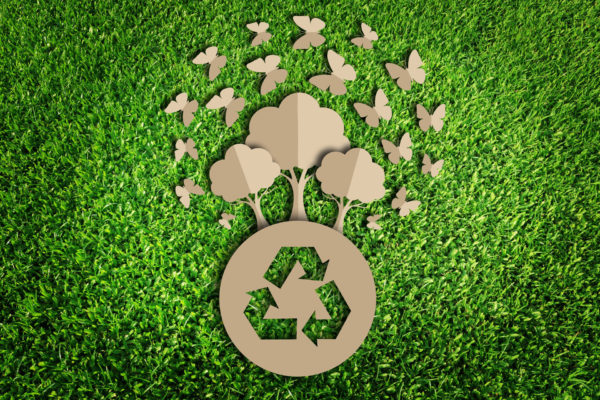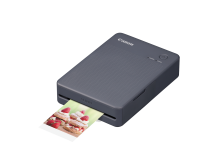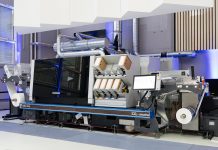When discussing sustainability in the printing industry, the emphasis is largely on paper production. In addition to the production process itself, it is crucial to consider the materials utilized, as this is where our carbon footprint begins.
Germany leads the way in paper consumption, with an average usage of approximately 600 grams per person per day. However, the domestic supply of wood is insufficient to meet this demand, prompting Germany to import raw materials from countries such as Brazil, Sweden, and Portugal. This reliance results in long transportation routes, contributing to high emissions and adversely affecting the flora and fauna of those nations. To mitigate these issues, the German market has increasingly turned to recycled paper, which is now the most recognized alternative to virgin fiber. The production of recycled paper eliminates the pulp manufacturing process, leading to an average reduction of up to 60 percent in energy and water usage.
A study conducted by the Technical University of Darmstadt further validates the benefits of recycled paper, demonstrating reductions in emissions, chemical usage, CO2 emissions, and waste generation. Recycled paper allows for the wood fiber to be reused multiple times, with a practical example highlighting that corrugated cardboard can be repurposed as many as 25 times.
Recycling is indeed beneficial; however, if the primary product also possesses a positive environmental balance, it would enhance the sustainability of recycled paper even further. This dual approach would not only contribute to a reduced environmental footprint but also improve the overall ecological impact reflected in our environmental balance sheet.
We have examined six sustainable paper alternatives and assessed them based on the criteria of raw materials, CO2 emissions, water usage, and chemical additives.
1- Paper made of grass
Grass paper is produced from sun-dried grass, or hay, which is a rapidly renewable resource that can be harvested multiple times a year and is readily available in many areas. Once the grass is compressed into pellets, it is transformed into an eco-friendly paper that conserves resources. The production of this sustainable paper uses 99 percent less water and 97 percent less energy compared to traditional wood-based paper manufacturing. Overall, the process results in up to 25 percent lower CO2 emissions.
This innovative natural paper has a wide range of potential applications. It can be utilized as printing paper, labels, and packaging material, and is suitable for use in the food and cosmetics industries due to its compliance with required certifications. Additionally, it is free from allergens that require labeling, and grass paper is fully recyclable.
2- Paper made from apple fibres
The apple fiber paper was introduced to the market in Bolzano, located in the picturesque South Tyrol, in 2007. An engineer sought a way to repurpose the apple waste generated from juice production and created a process to convert dried and ground apple pomace into paper, combined with FCS-certified cellulose. The production process avoids the use of chemical bleaching, and the amount of cellulose is kept to a minimum. This uncoated paper has a unique texture, making it perfect for high-quality printing and packaging.
Apple paper matches the durability and printability of conventional recycled paper, offering comparable performance without any apple scent or flavor. Similar to many sustainable paper alternatives, it is produced without chemical processing and remains unbleached, resulting in a slightly creamy hue. However, it is important to note that apple paper is not entirely wood-free; it achieves its high-quality printing characteristics through a blend of cellulose. Despite this, it is considered resource-friendly as it significantly decreases the reliance on recycled materials, acknowledging that even these resources are finite.
3- Paper from bamboo
Bamboo is recognized as one of the fastest-growing plants on the planet, with a giant bamboo stalk capable of growing up to 70 cm per day. This remarkable growth rate allows bamboo to absorb significant amounts of CO2, contributing positively to the environment. In the production of bamboo paper, the fibers are combined with sugar cane bagasse, which is a cellulose-rich byproduct from sugar production. This approach mirrors the method used for apple paper, as bamboo paper also utilizes food industry residues that would otherwise require costly and environmentally harmful disposal. This innovative use of materials not only promotes sustainability but also helps reduce waste.
Bamboo has the unique advantage of continuing to grow after it is harvested, which prevents the creation of "dead tissue" that would otherwise release CO2 back into the atmosphere. The natural properties of bamboo contribute to a high degree of whiteness in the paper, with a slight greenish and bluish tint. Additionally, the production of bamboo paper requires significantly fewer chemical agents for surface treatment, thanks to its inherent qualities. Bamboo fibers are exceptionally durable, making them well-suited for paper production. Once used, bamboo paper can be disposed of in recycling bins, allowing it to re-enter the recycling process. Overall, the environmental impact of bamboo paper is very positive, although it is important to note that its production does require substantial amounts of water.
4- Paper made from limestone
Rockpaper has developed an innovative material that transforms limestone into a paper-like fabric, known as Rockpaper. This product offers a unique texture similar to plastic while retaining the ability to be written on and printed like traditional paper. One of the key advantages of Rockpaper is its environmentally friendly production process, which eliminates the need for wood and water as raw materials. Additionally, the manufacturing process avoids the use of chemical bleaching agents and acids, ensuring that groundwater remains uncontaminated. Furthermore, when Rockpaper is incinerated, it does not release toxic gases into the atmosphere. Composed of up to 80% stone meal and a small amount of non-toxic polyethylene, Rockpaper represents a sustainable alternative to conventional paper products.
The company’s commitment to the “Cradle to Cradle” concept highlights its dedication to sustainability by ensuring that no waste is produced and that materials are recycled for new production processes. This approach not only minimizes environmental impact but also contributes to significant energy savings—specifically, 5,700 kilowatt hours are saved during the production of one tonne of their paper compared to conventional methods.
In addition to its eco-friendly production process, the paper boasts several advantageous characteristics. It is waterproof, highly durable, and tear-resistant, making it suitable for a variety of applications. Furthermore, its unique texture allows for reduced ink absorption, which can lead to cost savings in printing. The versatility of Rockpaper enables its use in screen, offset, and digital printing, making it an excellent choice for businesses looking for sustainable and high-performance printing solutions.
5- Paper from hemp fibres
To begin with, it is important to consider the blending ratio when discussing paper made from hemp fibers. This article will focus exclusively on paper composed of 100% hemp fibers. Previously, hemp papers were typically created from a combination of hemp fibers and recycled cellulose. However, it wasn't until 2021 that a company in Bavaria successfully produced paper made entirely from hemp fibers. This paper is known for its durability, positive environmental impact, and particularly pleasant texture. Made entirely from renewable raw materials, hemp paper consists of a blend of pressed hemp pulp, chalk, potato starch, and water.
Hemp is a quickly renewable resource that is simple to grow and harvest. While the production of hemp paper does not significantly conserve energy and water compared to traditional virgin fiber paper, it does have advantages in terms of recyclability, as it can be recycled more frequently and does not need dyes or bleaching. Additionally, hemp paper is known for its exceptional tear resistance and durability, as well as its natural waterproof properties. This versatility makes it suitable for all types of printing processes, providing considerable flexibility for processing companies.
6- Paper from the silphia fibre
Silphia fiber is derived as a byproduct of bioenergy production. Rather than being burned or stored in a manner that generates emissions, this residue is redirected into a new production process. The fiber acts as a substitute for cellulose, although it only allows for a savings of about 35 percent in cellulose content. In the paper manufacturing process, approximately 35 percent of the virgin fiber or recycled material can be replaced with silphia fiber. This beneficial plant shares similar characteristics with hemp and can be cultivated for up to 10 years with minimal pesticide use. Additionally, the extended flowering period of silphia is advantageous for the local bee population. Silphia paper is recyclable, just like traditional paper, and is primarily utilized in the printing industry for corrugated board products and packaging materials.
The trend is increasingly shifting towards enhancing recycled paper with rapidly renewable raw materials. This approach helps eliminate the necessity of sourcing additional recycled materials from abroad. For customers who prefer not to use recycled paper or its alternatives, there remains the option of utilizing materials sourced from sustainable forestry. The FSC and PEFC certifications are still recognized as indicators of sustainable products that can re-enter the production cycle. In the context of sustainability within the printing industry, the key question to consider is: “What is the most sustainable option available to me at this moment?” By prioritizing this consideration, we can also minimize our environmental footprint.













